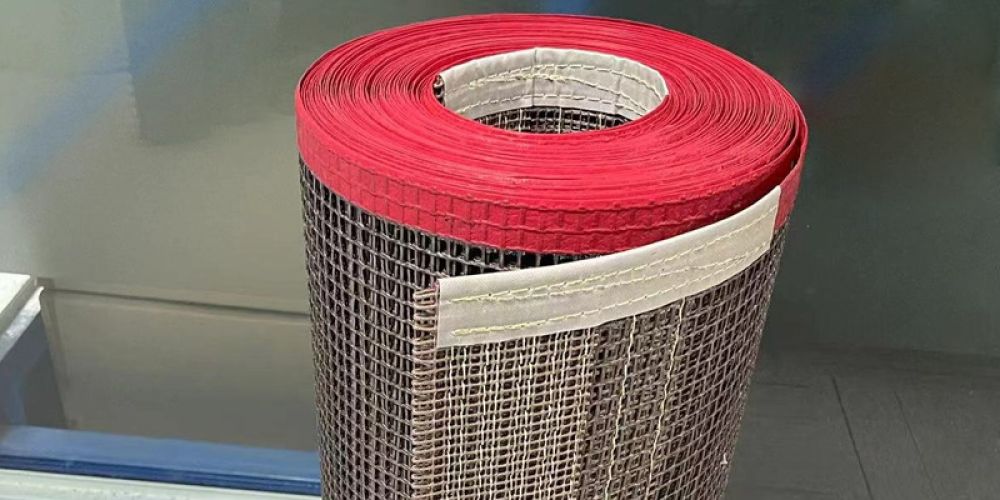
Heat sealing of Teflon conveyor belts is a key process step that ensures that the edges of the conveyor belts are firm, flat and beautiful, while improving the service life and performance of the conveyor belts. The following are the general steps and precautions for heat sealing of Teflon conveyor belts:
1. Prepare materials and equipment:
◦ Teflon conveyor belt body
◦ Edge sealing material (usually matched with the conveyor belt material)
◦ Heat sealing machine or heat sealing equipment
◦ Cleaning tools and solvents (for cleaning the conveyor belt edges)
2. Clean the conveyor belt edges:
◦ Use appropriate cleaning tools and solvents to thoroughly clean the conveyor belt edges to remove oil, dust and other impurities.
◦ Ensure that the edges are dry and free of moisture.
3. Position the edge sealing material:
◦ Place the edge sealing material accurately on the edge of the conveyor belt to ensure alignment and close fit.
◦ Use a clamp or positioning device to fix the edge sealing material to prevent movement during the heat sealing process.
4. Set the heat sealing parameters:
◦ Set the heat sealing machine parameters such as temperature, pressure and time according to the material, thickness of the conveyor belt and edge sealing material and the required heat sealing strength.
◦ Generally, the heat-sealing temperature needs to be higher than the melting point of the material but lower than its decomposition temperature.
5. Heat-sealing:
◦ Start the heat-sealing machine and feed the conveyor belt and edge-sealing material into the heat-sealing area.
◦ Keep the set temperature and pressure for a period of time to allow the edge-sealing material to fully fuse with the edge of the conveyor belt.
◦ Pay attention to the changes during the heat-sealing process and adjust the parameters in time to ensure the quality of the heat-sealing.
6. Cooling and curing:
◦ After the heat-sealing is completed, let the conveyor belt cool naturally at room temperature or use cooling equipment to accelerate the cooling.
◦ The curing time depends on the type of material and the heat-sealing conditions. It is usually necessary to wait for a period of time to ensure that the heat-sealed area is completely cured.
1. Choose the right edge-sealing material: The edge-sealing material should match the material of the conveyor belt to ensure good heat-sealing effect and durability.
2. Cleaning and drying: Before heat-sealing, it is necessary to ensure that the edge of the conveyor belt is clean, dry, and free of impurities such as oil, water, etc.
3. Control heat-sealing parameters: Accurately set the temperature, pressure, and time parameters of the heat-sealing machine to avoid material damage or poor heat-sealing caused by overheating, overpressure or too long a time.
4. Regular inspection and maintenance: Regularly inspect and maintain the heat sealing equipment to ensure its normal operation and accuracy.
5. Safety protection: During the heat sealing process, appropriate personal protective equipment such as gloves, goggles, etc. should be worn to prevent burns or other injuries.
The heat sealing of Teflon conveyor belts is a process step that requires precise control of multiple factors. By following the above steps and precautions, the quality and durability of the heat sealing edge can be ensured, thereby improving the overall performance and service life of the conveyor belt.